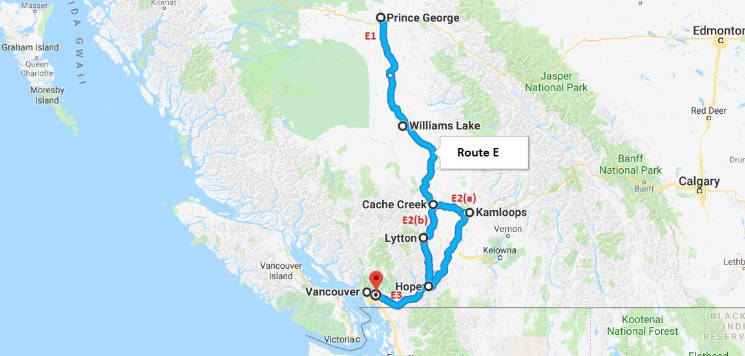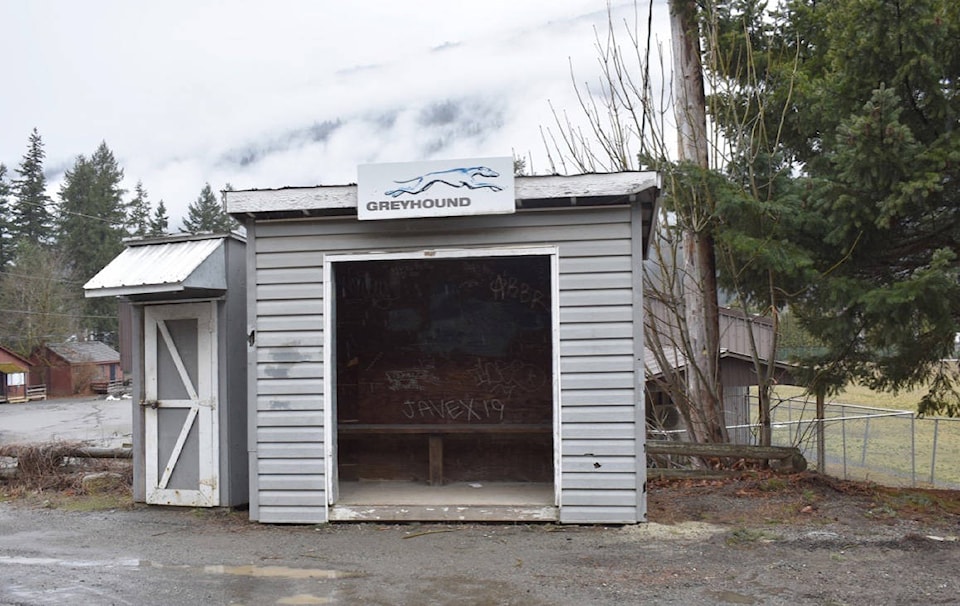The Fraser Canyon and parts of the Sunshine Valley will lose access to bus service after a February decision by a transportation tribunal gave Greyhound the go ahead to slash services along these routes.
Along with nine B.C. bus routes eliminated, the Feb. 20 decision by the Passenger Transportation Board (PTB) also reduced the minimum amount of trips per week and eliminated stops on some routes. The decision will eliminate stops along the Fraser Canyon, the Sunshine Valley and could reduce the amount of bus traffic through Hope.
Board documents state the routes and stops to be eliminated have “extremely low ridership and very large operating losses.” Since 2010, Greyhound buses have seen a 46 per cent decrease in ridership across the province and in the past five years, ridership has gone down by 30 per cent.
In its application, Greyhound stated these route changes were the only way it could continue to provide bus service in B.C.
“For the past six years, Greyhound’s passenger business has been unprofitable,” the decision by the PTB stated. “Greyhound states that it has lost $70 million in the province over the last six years and these losses are not sustainable.”
Even with its freight service subsidizing losses in passenger operations, it still had $4.6 million in losses last year.
FRASER CANYON, SUNSHINE VALLEY STOPS AXED
The Fraser Canyon communities of Spences Bridge, Shaw Springs, Lytton, North Bend, Boston Bar, Spuzzum and Yale will no longer have Greyhound bus service.
The Shaw Springs, North Bend, Spuzzum stops show close to zero demand from riders and the other stops have seen an 11 per cent decline in ridership.
Laidlaw and Bridal Falls, also served by Route E from Prince George to Vancouver, were eliminated.
During consultations about the route changes, Greyhound received submissions from organizations and people worried about the changes. The main issues brought up were access to medical and other appointments in larger centres, family connections and freight connections for local businesses.
The Nlaka’pamux Nation Tribal Council, whose members include Boothroyd Indian Band, Lytton First Nation, Boston Bar First Nation, Skuppah Indian Band, Oregon Jack Creek Band and Spuzzum First Nation, submitted a letter to Greyhound outlining their concerns. They said the route changes could lead people to use unsafe alternatives like hitchhiking and to more social isolation, a predictor of poorer health outcomes.
“It’s putting these communities in a vulnerable spot, not to have transportation,” said Dennis Adamson, regional director for Electoral Area A which includes Yale and Spuzzum. He said he sees community members from Yale, including seniors, women and young people, hitchhiking to Hope.
The Nlaka’pamux council stated the resulting isolation of their communities was not in line with the Truth and Reconciliation Commission’s Calls to Action and the UN Declaration on the Rights of Indigenous Peoples, which the provincial government promised to act in accordance with.
“The Nation’s land was taken to create the corridor through the Fraser Canyon which divided communities and led to increased noise, pollution and other negative impacts. Now, the one advantage of having transportation services is being taken away,” a summary in PTB documents stated.
Individual also submitted their concerns. Sixty per cent of them were from either Lytton or Boston Bar, their concerns included a lack of medical access and travel for seniors and people with disabilities, putting their safety at risk, losing connections with friends and family. connections to family and friends.
Some said the use of freight service was a concern, but customers who send and receive packages via Greyhound won’t be affected. “Greyhound is entering into partnership agreements to continue service for our freight customers,” Veronica Rivas, communications person, stated.
Lloyd Forman, president of the Hope and District Chamber of Commerce and a Boston Bar resident, said the community isn’t facing any huge gaps, even without Greyhound. A weekly clinic, private freight options and the ability to ship medicine up exist, as well as a weekly bus to Hope and Chilliwack.
The shuttle bus runs every Thursday and picks up in communities from Boston Bar down the Canyon. Adamson said the cost, $20 return to Hope and $30 return to Chilliwack, can be still prohibitive.
“If they’re making it unaffordable for people to live in cities and they’re coming out to the country, the economically challenged, or they moved here because they can’t afford to rent in the cities, they have to somehow provide them safe transportation,” Adamson said.
Parts of the Sunshine Valley will also be cut off from Greyhound service, with the elimination of Manning Park, Eastgate and Princeton stops. Route C from Vancouver to Osoyoos will only make four trips a week.
“These changes, although difficult, are necessary to ensure a reliable and sustainable bus service for the majority of communities in the Fraser Valley,” Rivas stated. “For years, Greyhound Canada has served the Valley while operating at significant losses.”
GREYHOUND TRAFFIC THROUGH HOPE COULD DECREASE
Several routes passing through Hope could also see reductions as the minimum route is pulled down to four per week, these include Route A from the Alberta border to Vancouver, Route E Prince George to Vancouver, Route N from the Alberta border to Vancouver, Route P from Vancouver to Kelowna.
Veronica Rivas, media contact for Greyhound, said no immediate changes will happen to the frequency of the bus routes passing through Hope.
“Greyhound applied to reduce the minimum amount of runs for certain routes, but it doesn’t mean that it will automatically lower the amount of runs it is currently running. It is just to have the flexibility, in the future, to increase or decrease the amount of runs for a particular route,” she said.
Hope Mayor Wilfried Vicktor said tourism will likely not be affected by the reduction in frequency, and what previously was a worry for him with Hope residents going westward is now covered by a public transit route.
The passengers which might be affected are people visiting friends and family, as well as backpackers, said Patrick Earl, executive director of Advantage Hope. While it may limit tourism a bit, he said more tourists come to Hope in charter buses and private vehicles.
Greyhound will continue operating on the routes and stops slated for elimination until May 31, but reductions in service can take place before this. The Passenger Transportation board will expedite any applications from those interested in providing transportation services along the stops to be eliminated.



